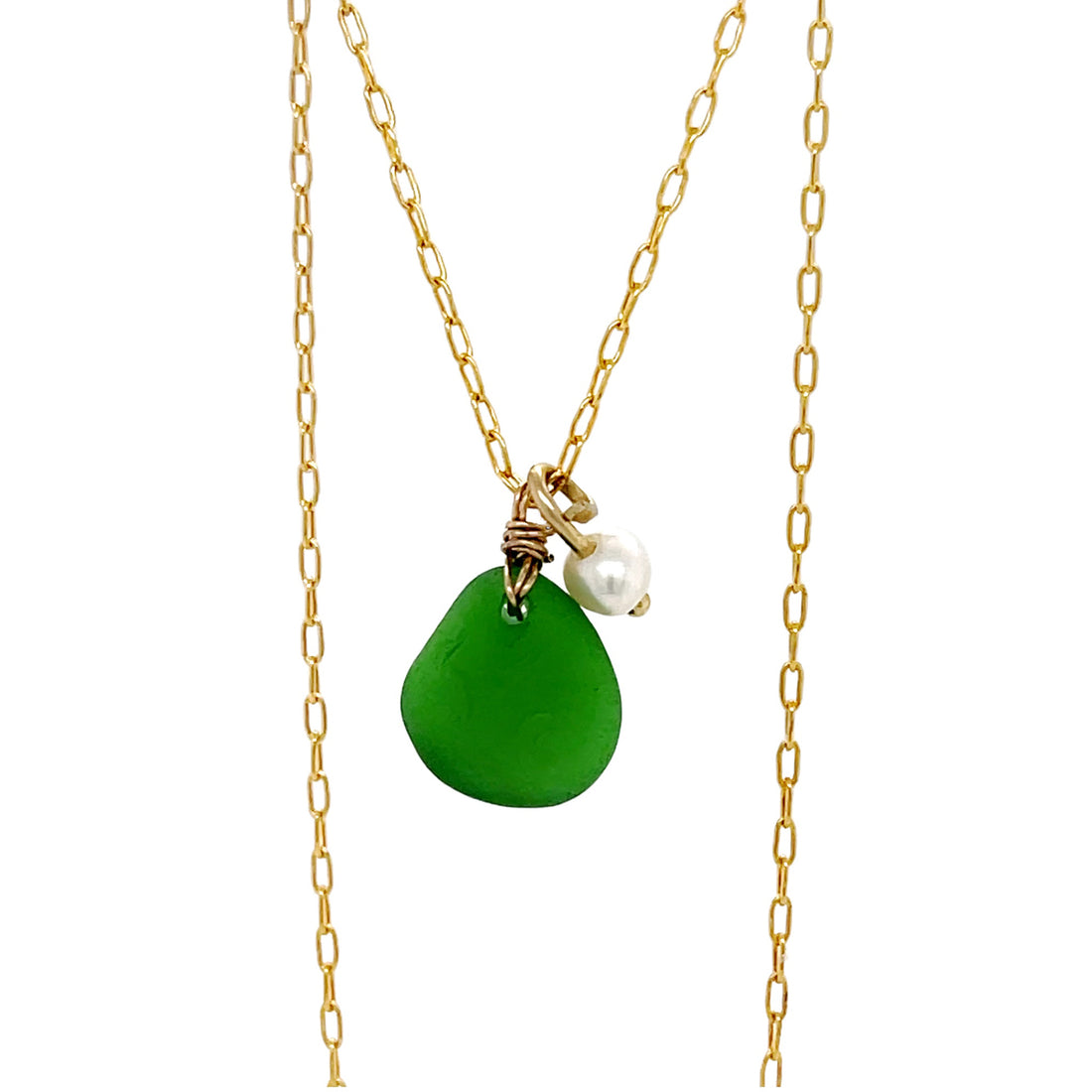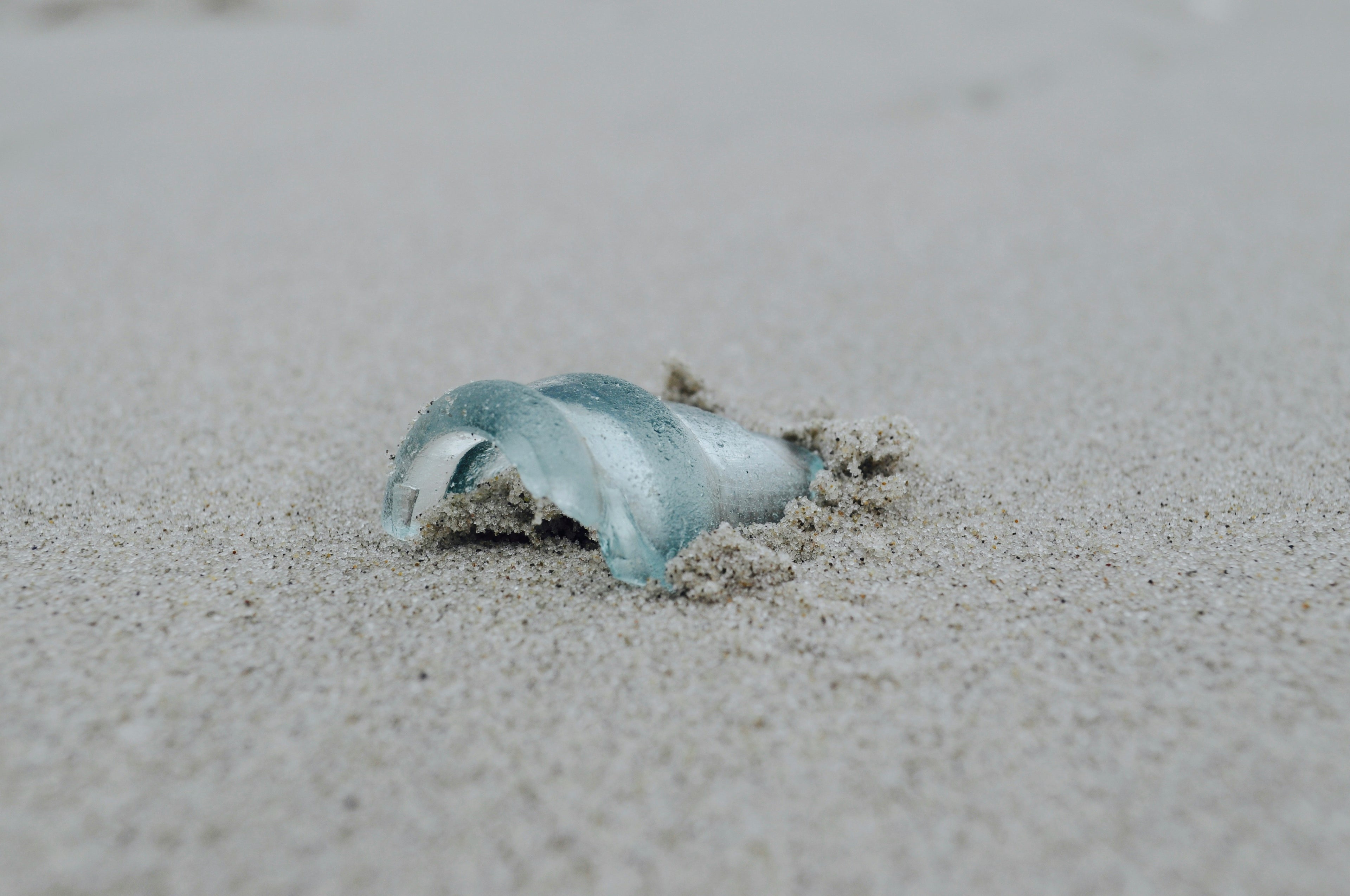
Before sea glass found its way into my designs it first found its way into my pockets.
It was on a windswept Welsh beach, that I first discovered tiny frosted jewel like fragments of sea glass hiding among pebbles. Each piece felt like a gift from the sea, and I couldn’t resist collecting these tiny treasures. I had no idea what they were or where they came from.
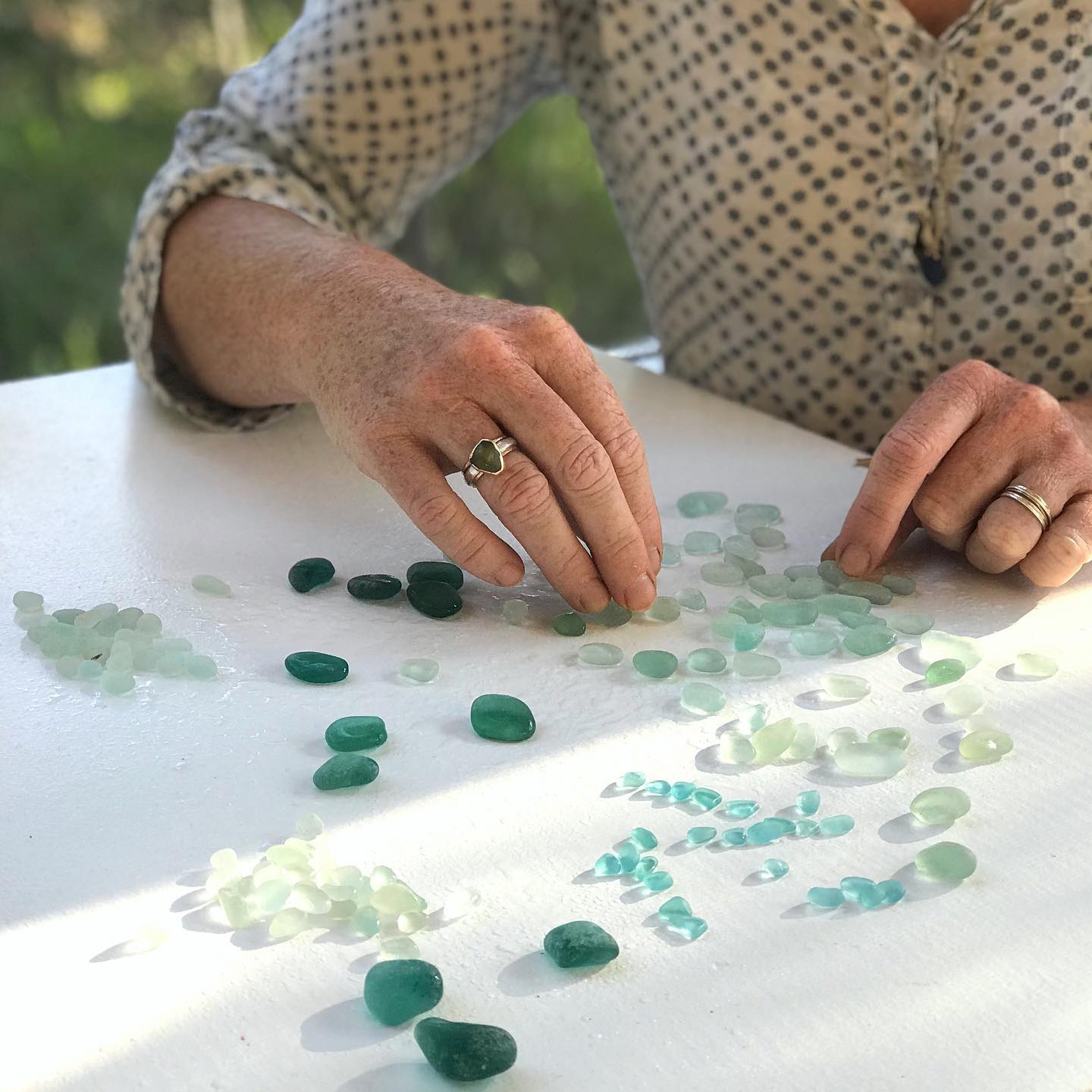
Forged in fire shaped by waves.
Sea glass starts as ordinary glass bottles, jars, and factory waste which is discarded into the sea. The role of the ocean takes central stage in producing sea glass and over time, sometimes centuries, the glass is tumbled relentlessly against sand and rocks.
This process softens edges, smooths surfaces, and gives each fragment its unique frosted charm.
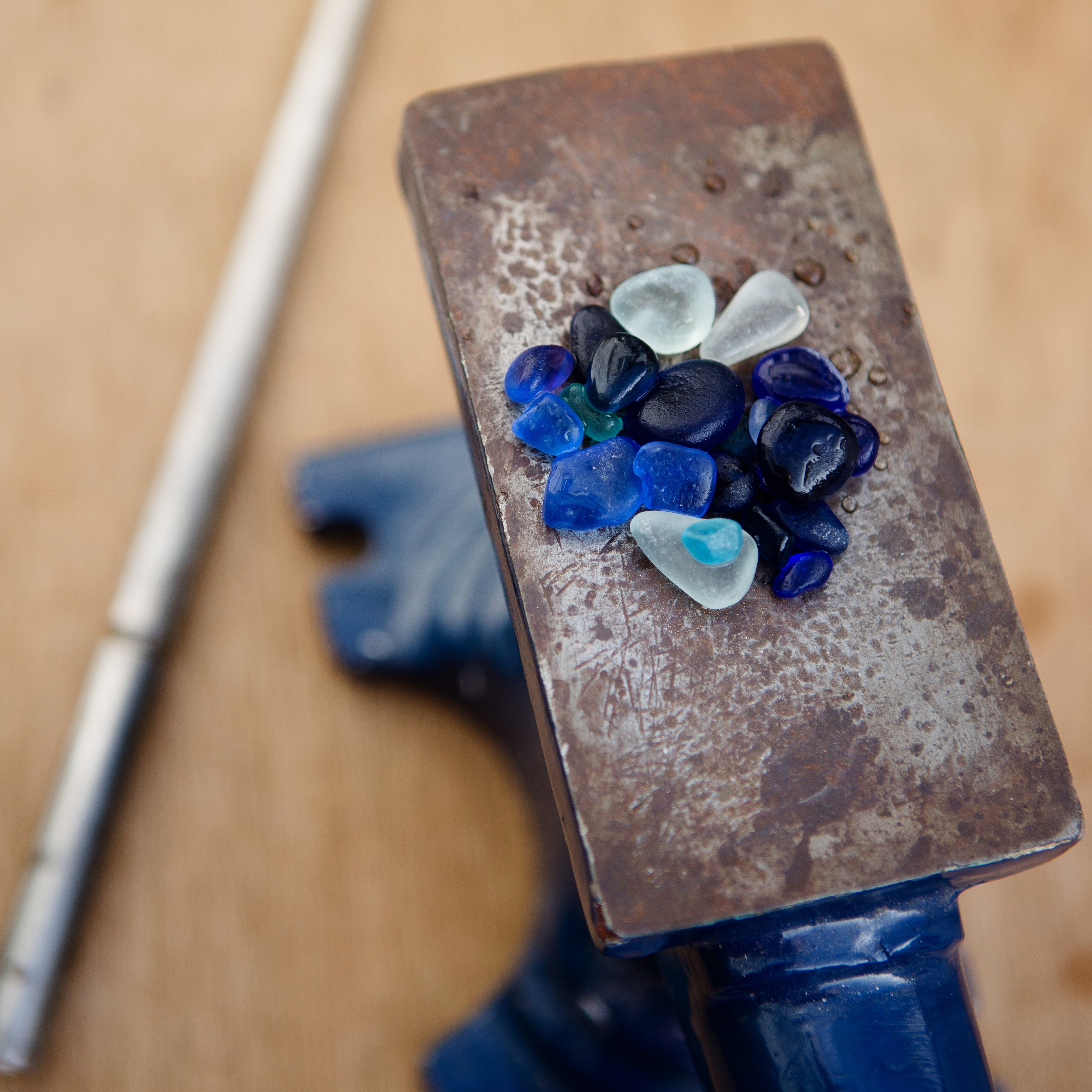
Tidal treasures.
I’ve spent months collecting sea glass from the world famous Seaham Beach in the UK, as well as Anglesey in North Wales, Biarritz in France, Barcelona, and along the Mediterranean.
I also source rare pieces from collectors in Japan and Iceland. Seaham is particularly special: its long, pebbly beach was once home to the Victorian-era Candlish Glass Bottle Factory, leaving a hidden bounty of antique glass waiting to be discovered with each passing tide.
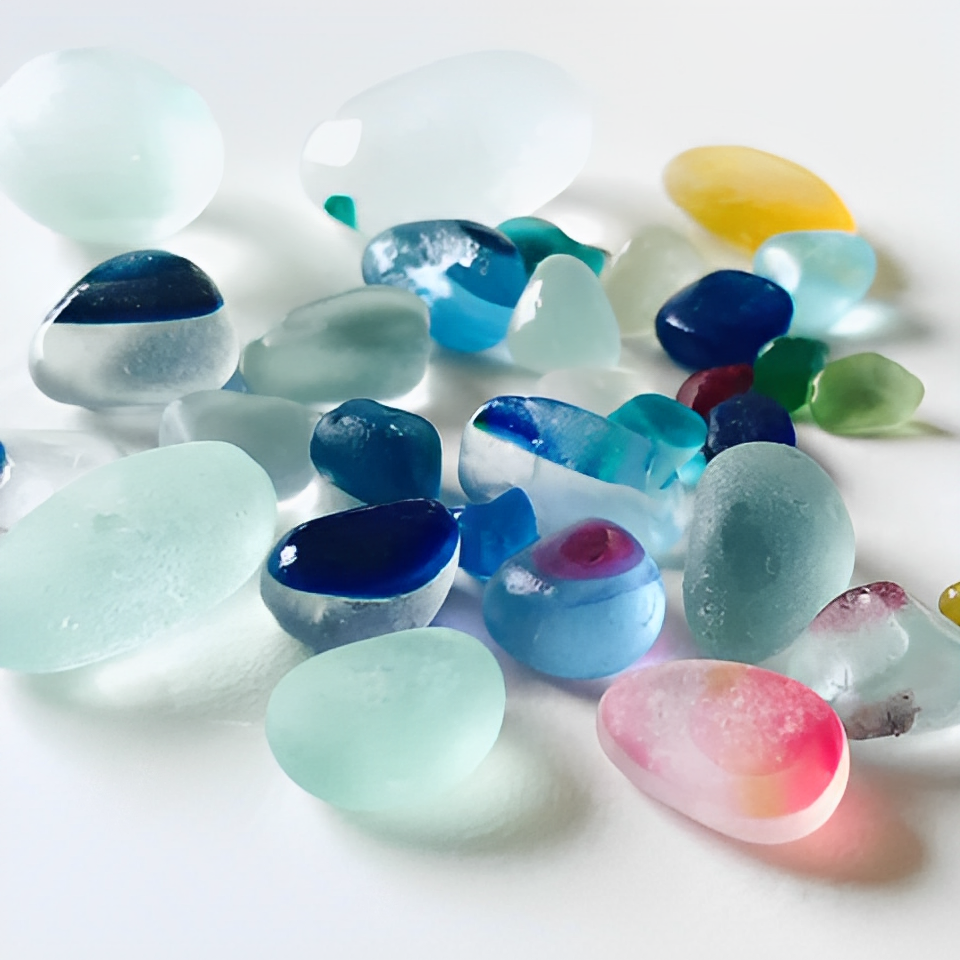
Which colours are rarest?
Even after collecting thousands of pieces from Seaham Beach, I still only have a few handfuls of blue and even fewer red fragments. Historically, some glass colours, were expensive to produce and reserved for special items, making them hard to find today. While most colours can be found at Seaham, the beach is also famous for its ‘multi’ nuggets, pieces with mixed colours.
I also source rare sea glass from overseas: Japan provides stunning aqua blues, likely from old sake bottles and glass floats, while Iceland yields rich teal nuggets, probably from imported bottles dating from before WWII to the 1950s. Each piece is a small treasure, shaped by history and the ocean.


